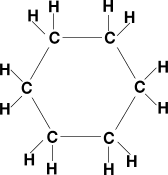
When doped with dye molecules, these nanoparticles become intensely luminescent reagents capable of sensitively signaling biological targets. When doped with bioactive molecules and medicines, these nanoparticles can serve as drug delivery vehicles capable of controlling the quantity and time of release.

Second, the negatively-charged silica matrix itself provides numerous electrostatic binding sites to physically dope (i.e., adsorb) a wide variety of positively-charged molecules.

With appropriate surface and internal functionality, these nanoparticles can be linked to a variety of biorecognition agents in many different ways (e.g., antibodies, protein complexes, nucleic acids, etc.). First, the surface of silica nanoparticles is easily modified based on well-established chemistry. Two major reasons make silica a useful matrix in this regard and particularly relevant in bioapplications. The role of silica nanoparticles in these cases is usually as a supporting or entrapping matrix. However, when these nanoparticles are combined with various functional molecules, the impact of size becomes significant-especially for analysis applications. By themselves, the size-dependent properties of pure, nanoscale silica nanoparticles are not remarkable. Recently, nanometer sized silica nanoparticles have developed rapidly and become an important class of nanomaterial. Traditionally, micrometer sized silica particles have been used as catalyst substrates, pigments, stationary phase in chromatography columns, etc. The size of silica-based nanoparticles affects their physical, chemical, electrical and optical properties. 11, 2008, for “Method for Production of Targeted Sized Nanoparticles” by Julia Xiaojun Zhao and Yuhui Jin, which is incorporated by reference. This application claims the benefit of U.S. Our team of experts can help you to determine the best solvent for your product.CROSS-REFERENCE TO RELATED APPLICATION(S) Need Bulk Chemicals for Oil Extractions?Įxtraction Grade Solvents provide various bulk chemical solvents for all of your oil extraction needs. Although hexane is not the only option in oil extraction, it is certainly one of the strongest solvent choices. Since hexane is a food-grade solvent, it is also in the clear to be used in the process of food production. Hexane can be used with various types of oils and is not restricted to one specific type. Even if the oil is being used for more industrial purposes, hexane will not alter the oil’s smell or color either. Unlike some other solvents, hexane will not alter the oil’s flavor, which is important for edible oils. Hexane is known to be a desirable processing aid, but it also has aesthetic benefits for oil extractions. Oil extraction requires fats to be soluble in a material, and hexane is a great match because it allows the oils to dissolve and separate from the original oilseed plant. Hexane and oils work quite well together, which makes hexane an ideal solvent for oil extraction. Oil extraction often uses solvents, so it makes sense to begin considering hexane usage here. Hexane is a solvent, which means that it can extract materials from substances. Hexane, specifically, is naturally occurring and derived from crude oil. Hexane Usage in Oil Extractionīoth oil and hexane come from chemicals. Some common oilseeds used for oil extraction are canola oil, soybean oil, vegetable oil, olive oil, and sunflower oil – although countless others can be seen on the market. Oftentimes, oil extraction also occurs through solvent use. After this step, oil extraction sometimes involves mechanical extraction through products like the expeller press. For oil extraction to occur, oilseeds must be properly prepared, going through methods such as conditioning and dehulling. Oil extraction occurs when the fatty liquid of oils is separated from oilseeds. Oils do not come in the state that consumers see them in but are rather derived from oilseeds. While oils are popular for their usage in edible products, they are useful to various industries and appear in several products.

At room temperature, oils are unsaturated and liquid. Oils are also hydrophobic, which means that they do not dissolve in water. Oils are fatty, greasy chemical substances that are nonpolar in nature.


 0 kommentar(er)
0 kommentar(er)
